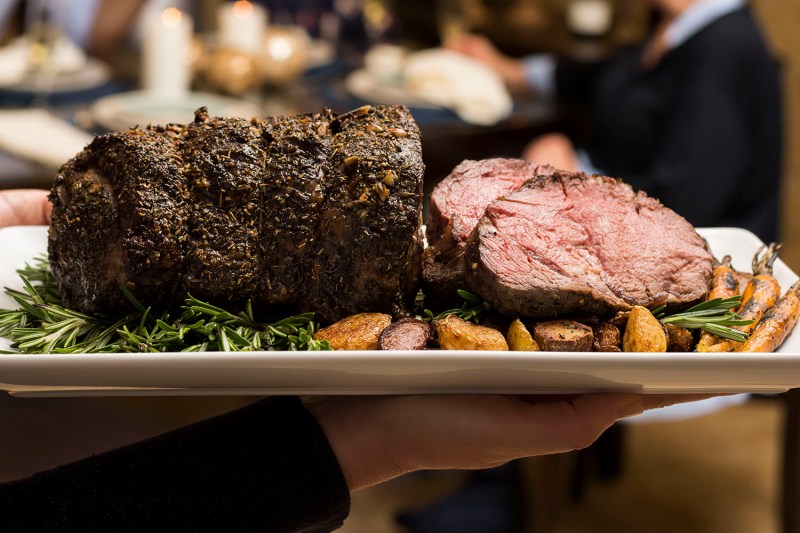No matter how much we have, we cannot get enough rib roast. Coming from the primal rib section of the cow, you probably also know a rib roast as prime rib. A classic for holiday meals or, really, any special occasion a rib roast shows that not only do you respect high-quality meat, but you also know how to cook it without screwing it up – a thing that all of your guests will love you for.
One meat that is prized for its quality (and has been in the news for heartbreaking circumstances lately) is Australian grass-fed beef. Naturally leaner in composition, grass-fed beef typically cooks faster than other types (this just means you’ll definitely want a meat thermometer on hand when cooking it).
This recipe comes to us from chef Renee Scharoff and True Aussie Beef and Lamb and, if you’re looking to find true Australian beef, you can check out the company’s meat locater here.
Herbs de Provence Aussie Rib Roast Recipe

(Serves 6-8)
Ingredients:
- 1 5-6 pound boneless Aussie grass-fed rib roast
- 3 tbsp Herbs de Provence
- 4 tbsp olive oil
- 6 garlic cloves, minced
- 2 tbsp kosher sea salt
- 1 tsp ground black pepper
Method:
- A few hours prior to cooking or even the night before so the flavors really permeate through the roast, take all ingredients and make a paste. Cut small slits into the meat and rub the garlic, herb, and olive oil paste all over the roast.
- Remove the meat from the refrigerator 1.5 hours before cooking, so it can come to room temperature. This ensures that it will cook evenly.
- Preheat the oven to 450 degrees Fahrenheit.
- Put the roast on a roasting rack and cook for 25 minutes, then turn oven down to 325 degrees Fahrenheit and cook until internal temperature reaches 120 degrees Fahrenheit using an instant-read thermometer. Remove the roast from the oven, cover it loosely with foil, and let it rest for about 20 minutes. Temperature will rise to about 130-135 degrees Fahrenheit for a perfect medium-rare temperature.
- Slice and serve.
Outside of buying Australian beef, if you’re looking for ways to help the victims of the Australian bushfires, check out this piece from CNN.



